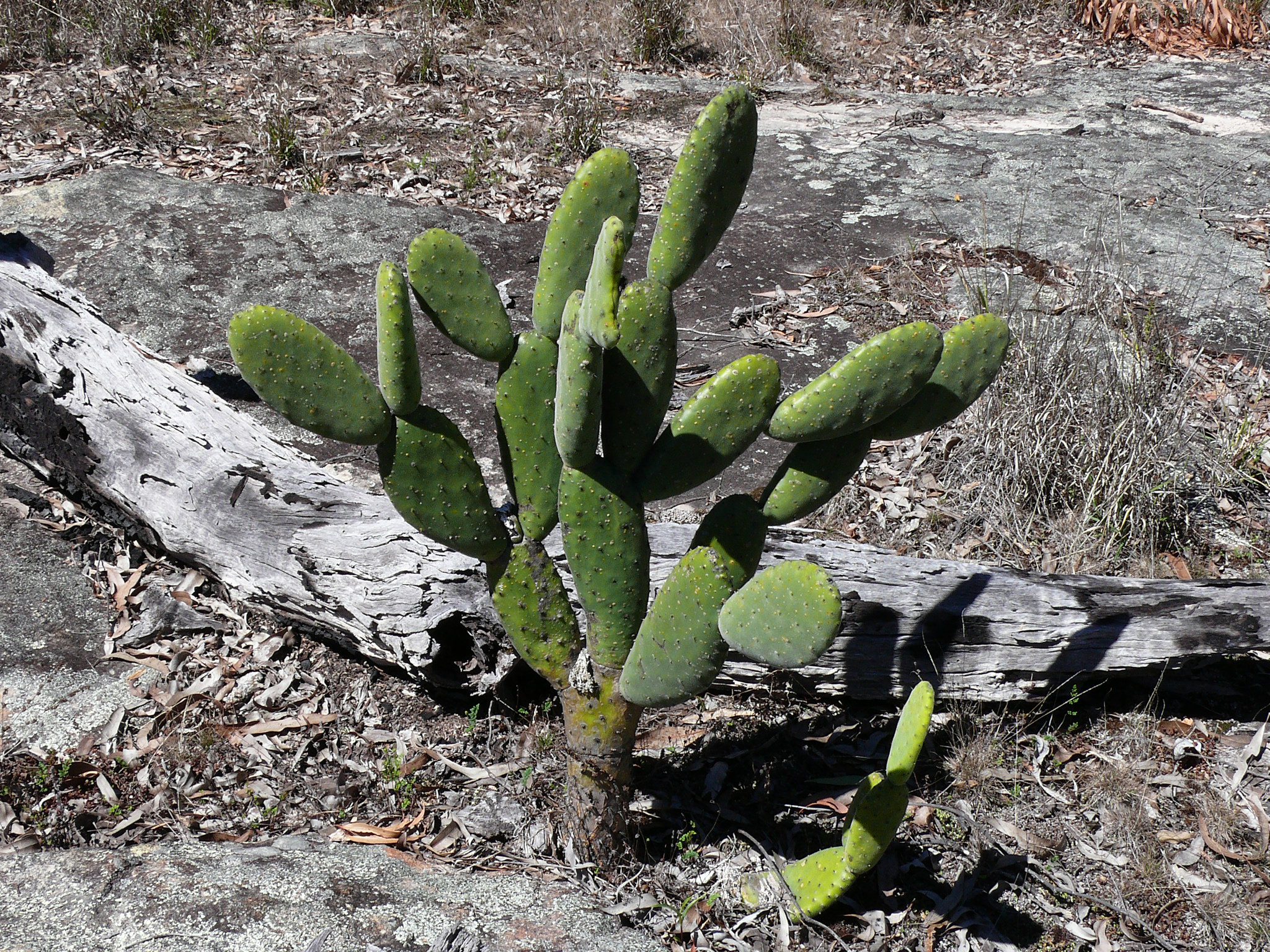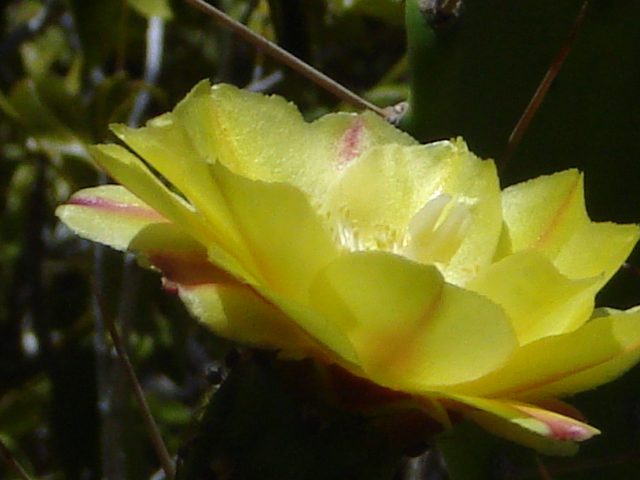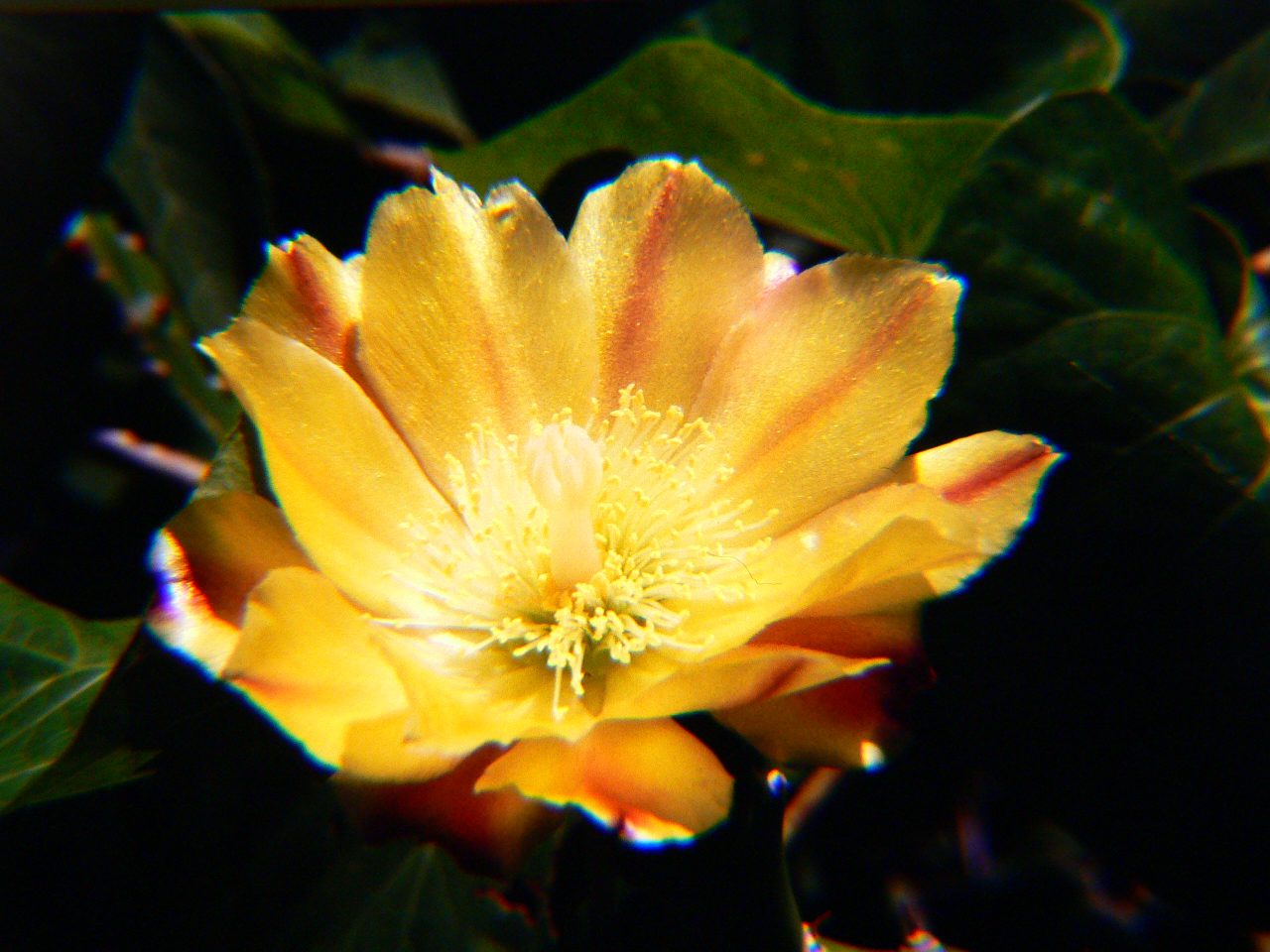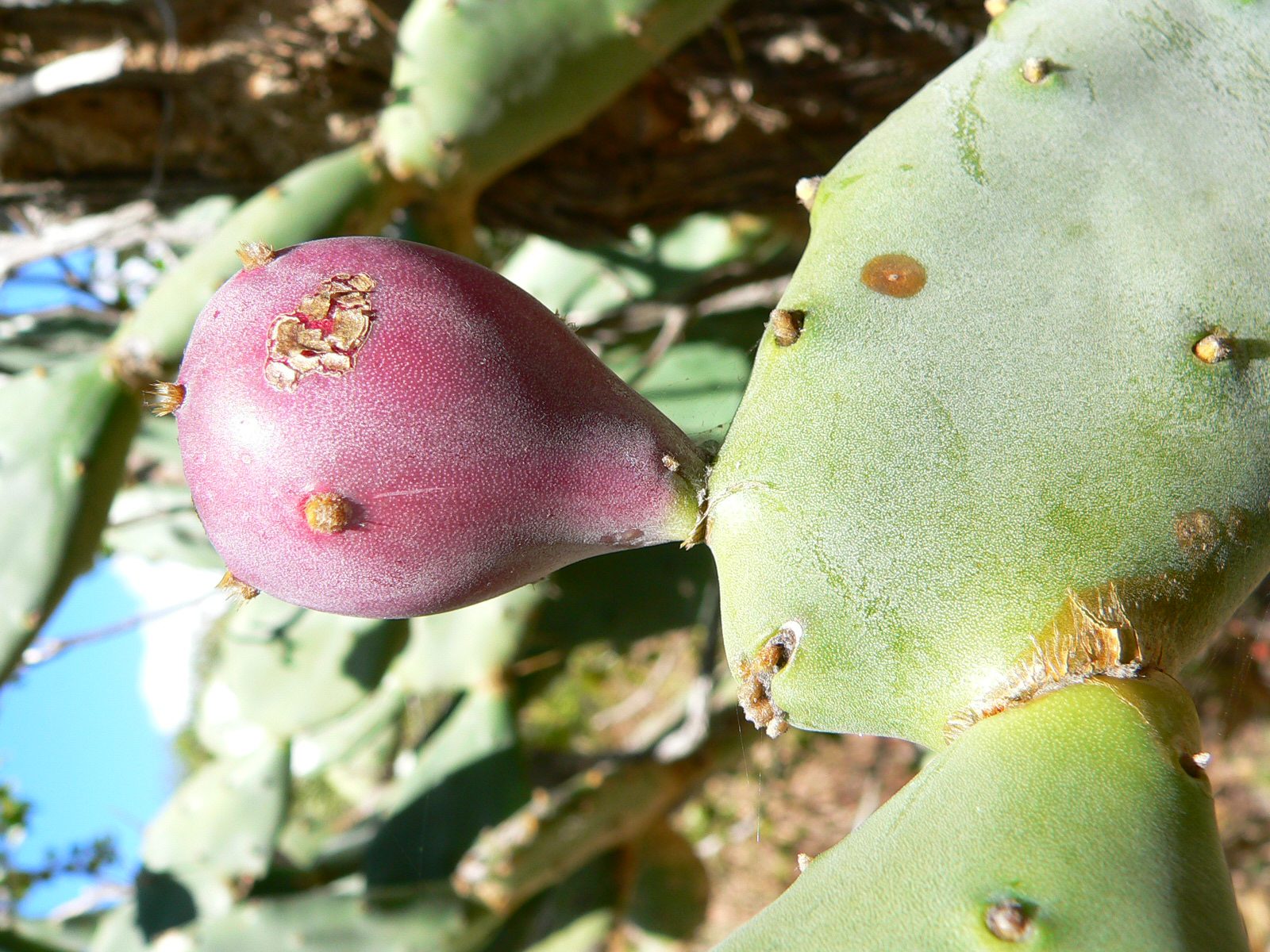Prickly pear, common pest pear, spiny pest pear
Opuntia stricta, Fam. Cactaceae












Low spreading shallow-rooted leafless succulent shrub to 1.5m tall; branches composed of flattened elliptic green or blue-green segments, 120-200 x 50-80mm and about 20mm thick; clusters of 1-7 stout spines, 20-40mm long, arise from cushions of barbed bristles arranged diagonally across the segments.
| Weed Category: |
Restricted invasive plants Category 3 Plants declared invasive under the Biosecurity Act 2014, that are present in QLD.
Not to be distributed or disposed of.
|
| Weed: | Yes |
| Form or habit: | Succulent or cactus |
| Family: | Cactaceae |
| Leaf: | Appears leafless, branches composed of flattened elliptic green or blue-green segments, 120-200 x 50-80mm and about 20mm thick. |
| Flower conspicuous: | Conspicuous |
| Flower colour: |
Yellow |
| Flower description: | Large showy yellow, borne around the upper margin of segments. |
| Fruit conspicuous: | Conspicuous |
| Fruit colour: |
Purple |
| Fruit: | Fleshy |
| Fruit description: | Pear-shaped fleshy purple berries, 40-60 x 30-40mm, with clusters of bristles scattered over the surface and numerous seeds imbedded in a rich carmine pulp. |
| Habitat: | |
| Distribution | |
| Food source for: | |
| Toxicity: | No toxicity known |
| Origin: | South America and Cuba |
| Notes: | Spread by: seeds with long viability, birds and animals. Vegetative fragments transported by flood waters and the sea, viable after many days in the sea. Invades/threats: Coastal areas including dune and strand areas on islands and the mainland. Notes: prickly pears were brought to Australia with the First Fleet as hosts for cochineal bugs, the source of red dye. Grown as garden ornamentals by early settlers. At the height of their rapid spread many millions of hectares of valuable grazing and agricultural land were infested. The larva of the Cactoblastis moth has largely brought prickly pears under control except in coastal area where it is not effective. Fruit are edible but require careful handling. Opuntia stricta appears to be the only species that occurs in this district. It and other species of prickly pear, O. aurantiaca, O. monacantha, O. tomentosa and O. streptacantha, are Category 3 restricted invasive plants under the Biosecurity Act 2014. They must not be given away, sold, or released into the environment without a permit. The Act requires everyone to take all reasonable and practical steps to minimise the risks associated with invasive plants and animals under their control. This is called a general biosecurity obligation (GBO). |
| Information sources: | Mackay Regional Pest Management Group (2018) Weeds of the Mackay Whitsunday Region Second Edition. |